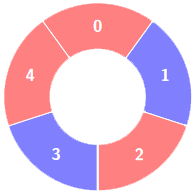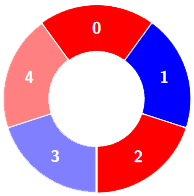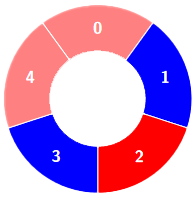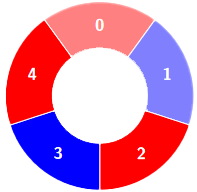LeetCode in Kotlin
3208. Alternating Groups II
Medium
There is a circle of red and blue tiles. You are given an array of integers colors and an integer k. The color of tile i is represented by colors[i]:
colors[i] == 0means that tileiis red.colors[i] == 1means that tileiis blue.
An alternating group is every k contiguous tiles in the circle with alternating colors (each tile in the group except the first and last one has a different color from its left and right tiles).
Return the number of alternating groups.
Note that since colors represents a circle, the first and the last tiles are considered to be next to each other.
Example 1:
Input: colors = [0,1,0,1,0], k = 3
Output: 3
Explanation:

Alternating groups:



Example 2:
Input: colors = [0,1,0,0,1,0,1], k = 6
Output: 2
Explanation:

Alternating groups:


Example 3:
Input: colors = [1,1,0,1], k = 4
Output: 0
Explanation:

Constraints:
3 <= colors.length <= 1050 <= colors[i] <= 13 <= k <= colors.length
Solution
import kotlin.math.max
class Solution {
fun numberOfAlternatingGroups(colors: IntArray, k: Int): Int {
var i = 0
var len = 0
var total = 0
while (i < colors.size - 1) {
var j = i + 1
if (colors[j] != colors[i]) {
len = 2
j++
while (j < colors.size && colors[j] != colors[j - 1]) {
j++
len++
}
if (j == colors.size) {
break
}
total += max(0, (len - k + 1))
}
i = j
len = 0
}
if (colors[0] != colors[colors.size - 1]) {
len = if (len == 0) 2 else len + 1
var j = 1
while (j < colors.size && colors[j] != colors[j - 1]) {
j++
len++
}
if (j >= k) {
len -= (j - k + 1)
}
}
total += max(0, (len - k + 1))
return total
}
}

